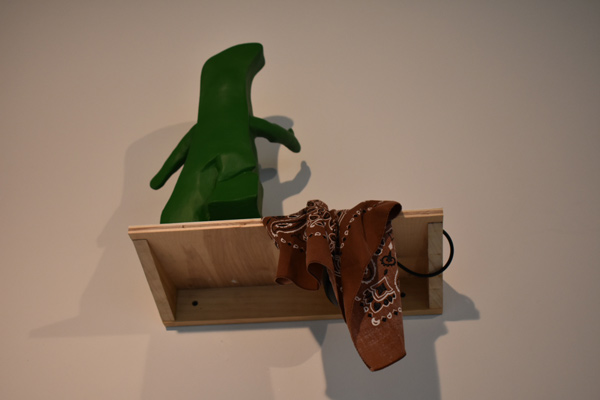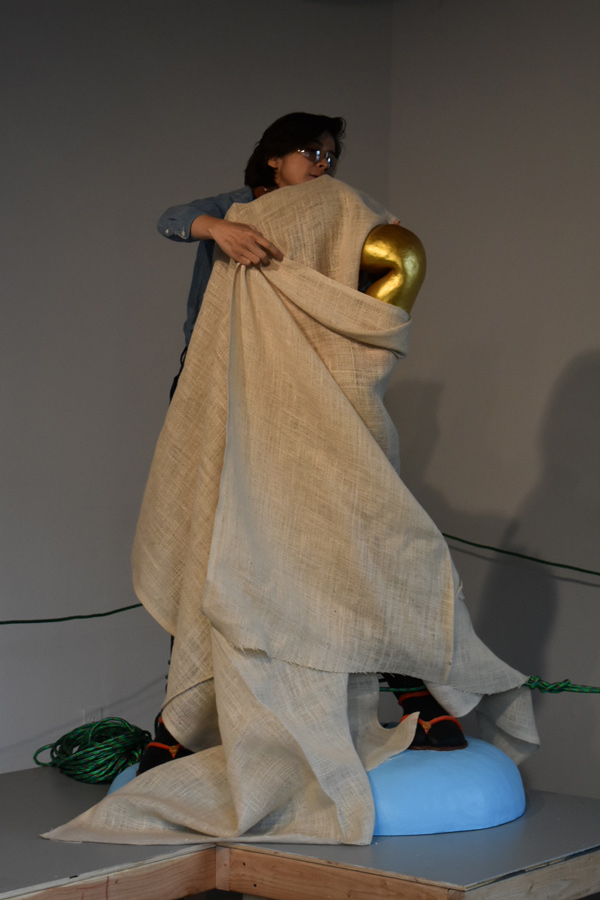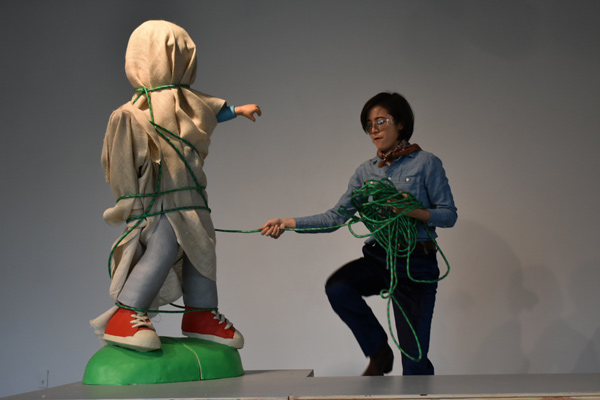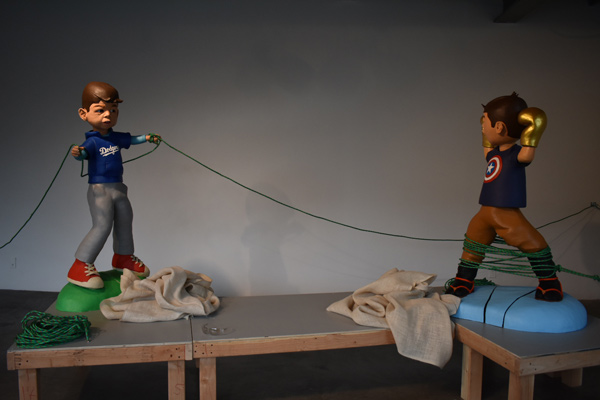When we withdraw from other people out of choice, we call the result privacy. When someone forces us into seclusion, it’s kidnapping. The artist Carolina Maki Kitagawa’s new show at Eastside International Los Angeles, “Story’s End No. 1 // Continúa El Cuento Nº. 1” plays with the blurry border between these two truisms. In Eastside’s spare, idea-filled space in DTLA, Kitagawa interacts with her sculptures, paintings, and video in ways that telegraph the confusions of living in a surveillance society whose economy is driven in part by walls and human capture.
In Homage to Harry Gamboa Jr., Kitagawa constructs a collage out of a photograph that seems to be of a person (Gamboa?) wearing a crown and standing next to a palm tree: A viewer can’t see the image, though, because it’s shielded by a block of blue wood. The work is also affixed with a security camera that glares at spectators while they try to peer around the obstruction to see what lies beneath. A similar conceit drives Homage to Selena, where a photograph of one woman holding another woman’s arm (perhaps one of these is the singer Selena Quintanilla?) is barricaded by a rectangular red block of wood.

Kitagawa’s quirky aesthetic also infuses a small sculpture that looks like Gumby (it is a mock-up of a race-obliterating costume that Eddie Murphy wore on Saturday Night Live in the 1980’s) standing next to a brown handkerchief that drapes over yet another security camera. Beneath this assemblage presides a drawing of Mickey Mouse with a muscular wrestler’s body that Kitagawa’s nephew, Kazuo, drew for her. In a recessed area, we see a multicolor video spliced together from the surveillance footage.

What does it all mean? The interplay between hide and seek, retreat and capture, finds even more beguiling expression in Kitagawa’s three-part performance. On February 16, she began this trilogy by introducing two large sculptures of boys in the gallery: The large, wood-and-paint figures (one of which is modeled after her nephew) stand before each other as if about to fight—Kitagawa messages the mood of violence by outfitting one figure in golden boxing gloves.

On Saturday, March 2, Kitagawa began the second part of her epic by performing a mummery wherein she put on safety glasses and covered both figures in linen tarps. She smothered them in the fabric and then began to tie them up with green rope, over and over again. The linen went over the figures’ heads and the ropes fettered them at their throats, chests, and hips.
When she first cast the cloaks over the boys, the gesture seemed tender; but then dread crept in as she began to imprison them. Kitagawa did not speak during her action, but stamped her feet as she circled her sculptures, muzzling them and binding them until she almost completely hid them from view.

Was she protecting the boys from the brutality of the world with her strange shields? Was she strangling and suffocating them? Both. Her bizarre, ingenious, and elegantly minimalist pantomime described the state we find ourselves in now: We would like to find sanctuary away from the savagery around us, but even as we try to retreat, we find ourselves stepping back into enforced silence and prisons.
On March 30, Kitagawa will hold her last of the exhibition’s performances at Eastside International.
Carolina Maki Kitagawa, “Story’s End No. 1 // Continúa El Cuento Nº. 1,” February 16 – March 30, 2019, at Eastside International Los Angeles, 602 Moulton Avenue, Los Angeles, CA, 90031. www.eastsideinternational.com


